
Natural pearls from Bahrain showcase unique colors and luster.
The waters of the Persian Gulf, particularly around Bahrain, were historically famous for producing some of the finest natural pearls. These pearls were highly valued for their luster, roundness, and unique colors. The South Sea, particularly around Australia, Indonesia, and the Philippines, is known for producing large and lustrous natural pearls. South Sea pearls are often prized for their size, ranging from 10 to 20 millimeters, and their creamy white or golden hues. The Gulf of Mannar, located between India and Sri Lanka, has been historically recognized for producing high-quality natural pearls. These pearls are appreciated for their rich luster, roundness, and soft, warm hues.
The most valuable pearls in the world belong to the Persian Gulf, and these pearls are caught in a completely natural and traditional way by local divers. Many believe that the reason for the brilliant shine of these shiny pearls is due to the combination of salt and fresh water and being close to land. But unfortunately, the natural pearl fishing industry was stopped in the early 30s due to the discovery of large oil resources and fishermen were looking for more profit. they went. In the end, due to overfishing of pearls, as well as the entry of oil pollutants and the pollution of sea water, it was destroyed.
Today, pearl oyster beds are spread all over the Persian Gulf, and it seems that the accumulation of these molluscs is more around the country of Bahrain. One of the best and most fertile pearl areas is about 240 to 20 kilometers away from the coasts of Arab countries and pearl fishing has been done in this area for more than two thousand years. Hence, geologists have named this place as the pearl bed. This bed is stretched from Kuwait and Bahrain to Kish and Hormuz islands.
Historically, the best pearls in the world are found in the Persian Gulf, especially in what is now Bahrain. These pearls were naturally produced and traditionally caught by local divers. The secret of the special shine of the pearls of the Persian Gulf is probably due to the special combination of salt and fresh water near the land. But, unfortunately, the natural pearl industry of the Persian Gulf was suddenly destroyed in the early 1930s with the discovery of huge oil resources. Those who were engaged in catching and trading pearls gave up the pearl trade in search of greater profits in the emerging oil industry. In fact, as a result of the entry of oil pollutants and the resulting water pollution, as well as the excessive fishing of oysters, the pure pearl industry of the Persian Gulf was destroyed.
Japan, Australia, Indonesia, Myanmar, China, Philippines, India and Thailand are also the major pearl producing countries. The waters of the South Sea near Australia, Indonesia and Myanmar are famous for having white and large pearls, and Japanese pearls are also famous for their shine and beautiful appearance. But despite the fact that Australian pearls are caught in the same waters as the pearls of Myanmar and Indonesia, this country insists on telling everyone that Australian pearls are better and better than the rest of the South Sea pearls!
The waters around French Polynesia, specifically Tahiti, are renowned for producing Tahitian pearls. These pearls are celebrated for their dark and exotic colors, including black, gray, peacock green, and blue. Tahitian pearls are often characterized by their size, unique overtones, and desirable surface markings. The Sea of Cortez, located between Baja California and mainland Mexico, is known for producing rare and exceptional natural pearls. The pearls from this region are highly regarded for their rich colors, including vibrant pinks, purples, and golds.
-
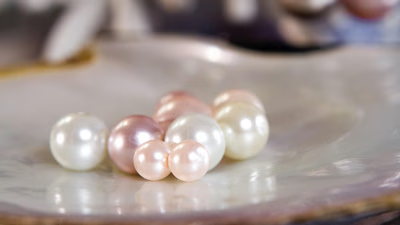
Natural pearl fishing in the Persian Gulf has a storied history, particularly around Bahrain, known for its rich oyster beds. Skilled divers employed traditional techniques to harvest oysters, facing dangers like drowning and shark attacks. This labor-intensive process involved extracting and grading pearls for local markets and international trade, significantly contributing to the region"s economy and cultural heritage. However, the rise of cultured pearls in the early 20th century, coupled with overfishing and environmental changes, led to a decline in natural pearl demand. Historically significant areas for pearl diving included "Mughas" or "Mughas al-Lulu
-
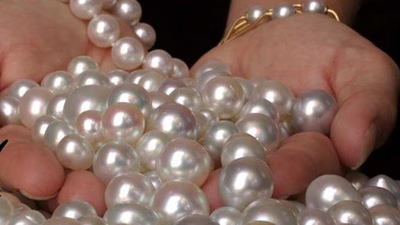
Pearls are categorized based on their cultivation methods, environments, and the mollusks that produce them. The two main types are natural and cultured pearls, with further distinctions between saltwater and freshwater varieties. Saltwater pearls, such as Akoya and South Sea pearls, are known for their high luster and larger sizes, while freshwater pearls are more abundant and come in various colors but typically have a lower shine. Akoya pearls, primarily from Japan and China, range from 2 to 10 millimeters in size and are often white or cream-colored. South Sea pearls, sourced from Australia and the Philippines, can be as large as 20 millimeters and exhibit luxurious luster in shades of white or gold. Mabe pearls have a unique shape due to their cultivation method involving a half-spherical nucleus. Conch pearls are rare gems known for their vibrant colors found in queen conch mollusks. Environmental factors like water quality and temperature significantly influence pearl characteristics, leading to variations in size, shape, and color among different types.
Tahitian pearls stand out for their dark hues cultivated in French Polynesia. Overall, the pearl industry is shaped by both natural processes and human intervention through farming techniques.
-

The Persian Gulf, particularly around Bahrain, has a rich history of producing some of the world"s finest natural pearls, known for their luster and unique colors. South Sea pearls from Australia, Indonesia, and the Philippines are also highly valued for their size and creamy hues. The Gulf of Mannar between India and Sri Lanka is recognized for its high-quality pearls with warm tones. Historically, the Persian Gulf"s pearl industry thrived until the early 1930s when oil discoveries shifted focus to more profitable ventures. This led to overfishing and pollution that devastated the pearl industry. Today, pearl oyster beds remain in the Persian Gulf, especially near Bahrain, where fishing has occurred for over two millennia. Despite other countries like Japan and Australia producing notable pearls, the Persian Gulf"s natural pearls are still considered among the best due to their unique environmental conditions. However, the legacy of traditional pearl diving has been largely overshadowed by industrial changes in the region. "
-
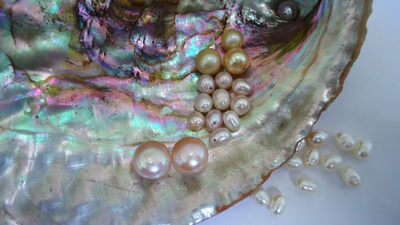
Natural pearls form organically within mollusks without human intervention, resulting from irritants like sand. They are rare and valued for their unique characteristics. Cultured pearls, on the other hand, are created through human intervention by implanting a nucleus into the mollusk, leading to nacre secretion. While they closely resemble natural pearls in appearance and are more affordable, distinguishing between the two can be challenging. Specific weight is one method of differentiation, with natural pearls typically weighing less than 2. 73. Cultured pearls exhibit luminescence under UV light, while artificial pearls are man-made from materials like glass or plastic and lack the organic qualities of natural or cultured varieties. The rise of artificial pearl production in China has significantly impacted the natural pearl industry in regions like the Persian Gulf. Understanding these differences is crucial for consumers and traders in the pearl market.
-
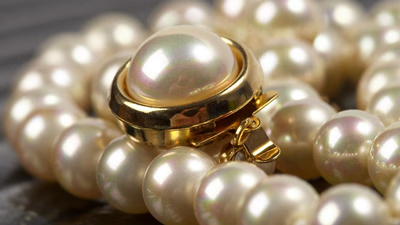
The price of pearls is influenced by several key factors including type, size, shape, luster, color, surface quality, and origin. Natural pearls and rare varieties like conch or Tahitian pearls are more valuable due to their scarcity. Larger pearls are generally more expensive, with significant price increases for larger sizes. Round pearls are the most sought after for their symmetry, while other shapes like baroque are less valuable. Luster plays a crucial role; pearls with high luster reflect light better and command higher prices. Freshwater pearls are typically less expensive than Akoya or Tahitian varieties. The South Sea pearl is the most expensive type, with prices ranging from $1,000 to over $100,000 based on size and quality. The origin of the pearl also affects its value; those from renowned regions like the Persian Gulf or South Sea are often priced higher due to their reputation.
Market demand and trends can further influence prices as consumer preferences shift. Overall, the value of a pearl is determined by a combination of these factors.
-
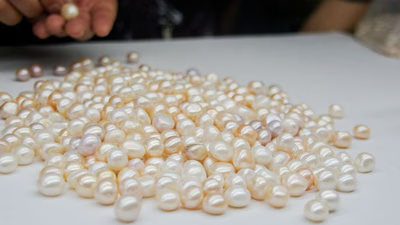
Natural pearls are gemstones formed within mollusks, such as oysters and mussels, when an irritant becomes trapped in their soft tissue. The mollusk secretes layers of nacre around the irritant, resulting in a pearl over several years. Factors like the species of mollusk and environmental conditions influence the pearl"s shape, luster, and color. Historically valued for their beauty, pearls have been traded for thousands of years, particularly in regions like China. They can vary in color from white to blackish gray and come in various shapes, with round pearls being the most sought after. The size of pearls typically ranges from 7 to 9. 5 mm, with larger and smoother specimens commanding higher prices. While natural pearls are rare and highly valued in jewelry, most pearls on the market today are cultured, created through human intervention to initiate pearl formation.
Cultured pearls resemble natural ones but are more affordable and widely available. "






